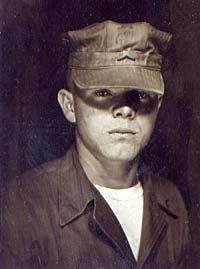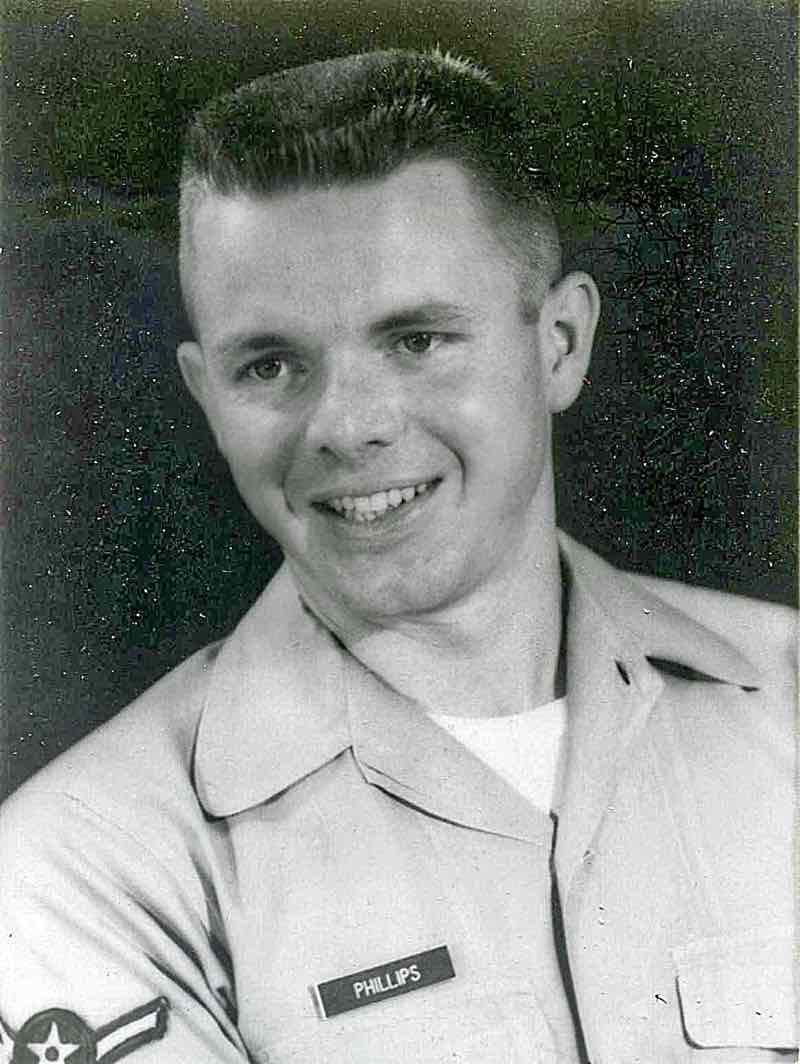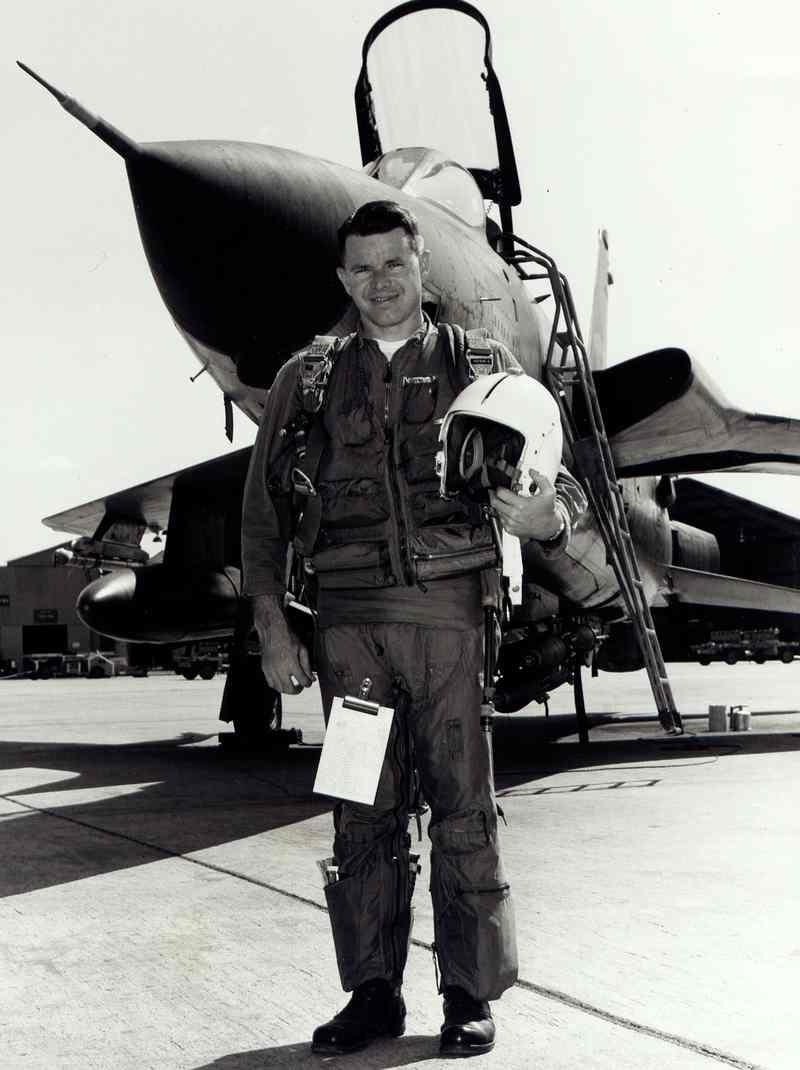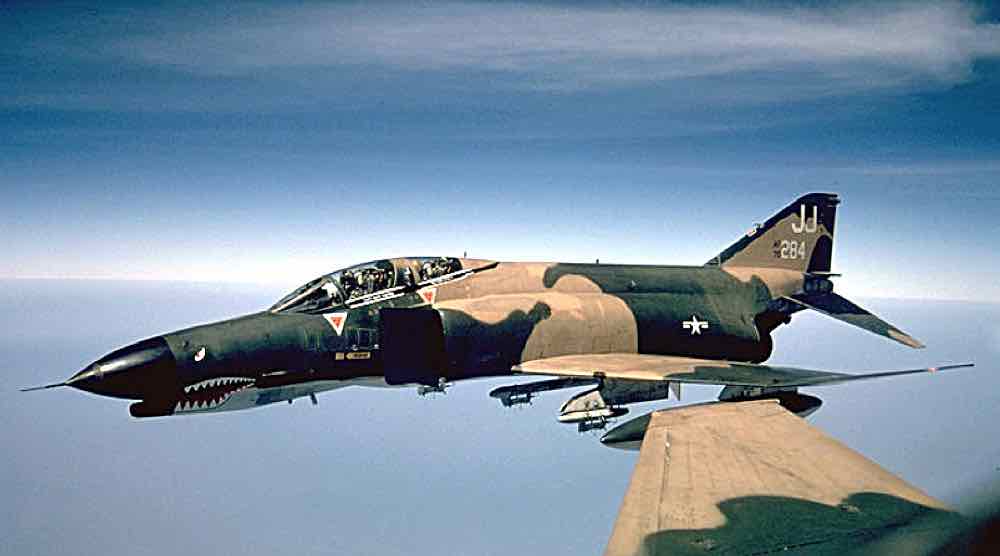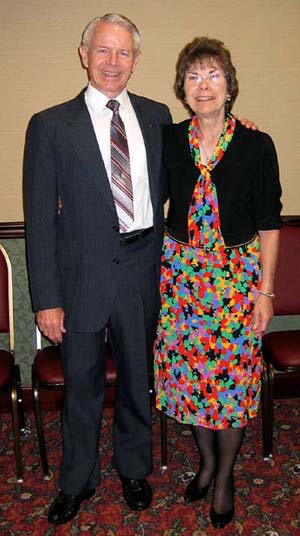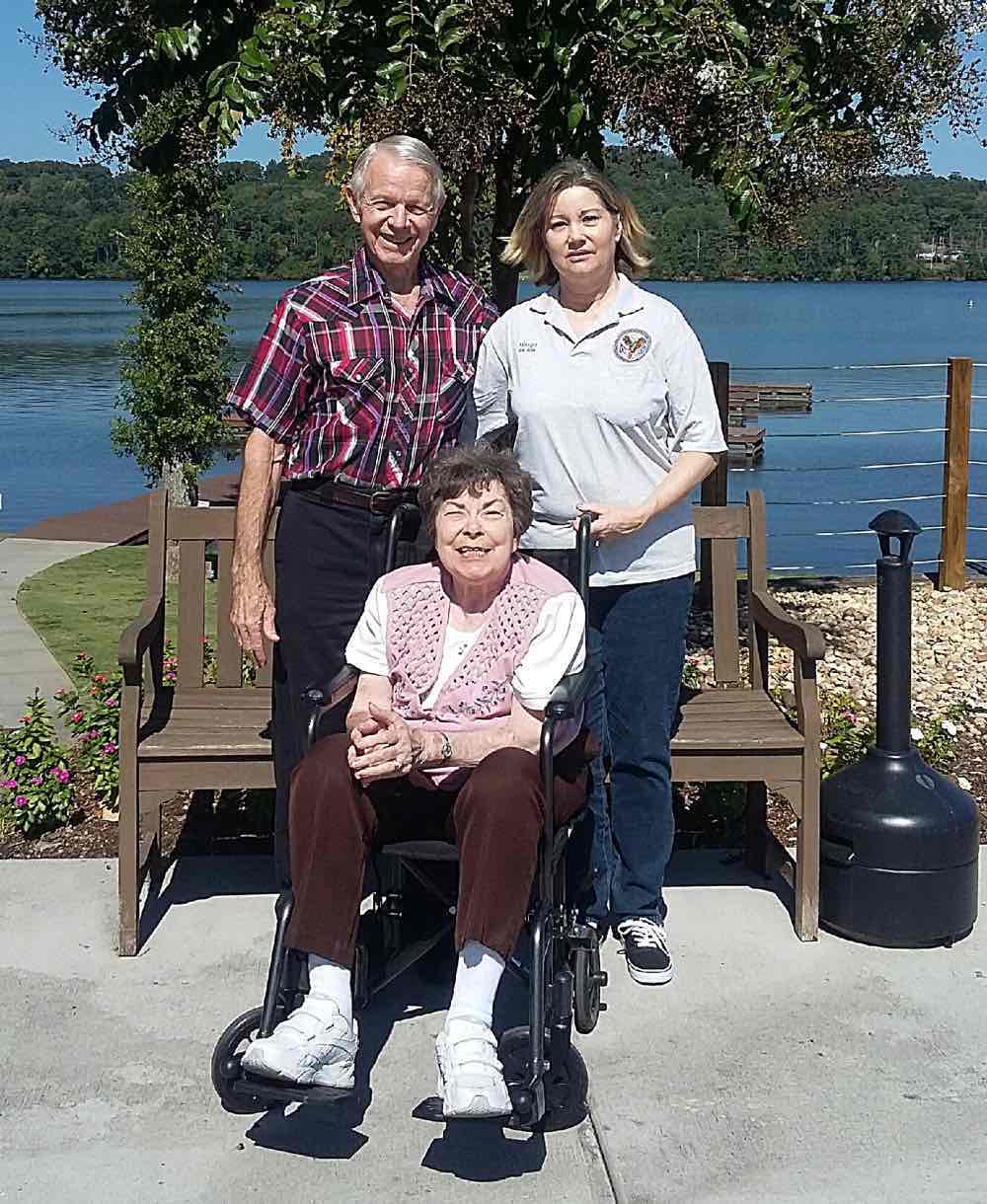-
1937 to 1948
The Early Years
I was born in Wichita, Kansas, in 1937. Dad left in 1941, but my mother managed to support us with a job at Cessna Aircraft until World War II ended. All the women were laid off and the jobs were given to the returning men. Mom moved my younger brother and me to a small farm near Rose Hill, Kansas, in 1948 and we lived a poor, but happy life. Except for when our house burned down in 1952 and we lost everything (but that's another story). -
1955 to 1958
After Graduation
After graduation from Rose Hill High School in 1955 it was off to wheat harvesting (my fourth season) and then to a job at Boeing for about six months until I enlisted in the U.S. Marine Corps in 1956. After finishing boot camp as the platoon honor graduate I was assigned to Camp Pendleton, California, where I remained and became a Sergeant before discharge in 1958.
-
1959 to 1961
U. S. Air Force Enlisted Years
In 1959 I enlisted in the U. S. Air Force, at a lower rank, and was directly assigned to Nellis AFB, Nevada, as an administrative clerk for the Fighter Weapons School, home of the Air Force Top Gun program and the Thunderbirds. Since I was about the only guy on base that shined his shoes they selected me as Nellis AFB Airman-of-the-Month and gave me a ride in an F-100 fighter aircraft, thereby addicting me to that type of flying. At the urging of local pilots I applied for Officer Candidate School. Luckily I was one of 144 that was selected, but only 101 of us made it through and got commissioned.
-
1961 to 1966
Becoming an Air Force Fighter Pilot
After OCS graduation I was fortunate enough to obtain one of the pilot training assignments and was sent to Vance AFB at Enid, Oklahoma. By graduating as the top pilot of that class I was able to pick F-100 fighter pilot training at Luke AFB, near Phoenix, Arizona. See the F-100 Class section below for a look at the class members.Completing the F-100 course as a top graduate gave me the opportunity to choose an assignment to the newest fighter aircraft, the F-105 Thunderchief. The first operational assignment was to McConnell AFB, at Wichita, Kansas, where they were converting from F-100s to F-105s. I was not excited about returning to Kansas, but my mom thought it was great since I was only 10 miles from home. Upgrading to the F-105 was sporty at Nellis AFB and my class lost two airplanes in a week while the Thunderbirds had one come apart in the air, so they grounded the entire fleet and sent me back to McConnell. While on a training mission on January 6, 1965, my aircraft caught fire in the forward area resulting in complete electrical failure and partial loss of control. Despite poor weather conditions, I managed to land the aircraft and was subsequently awarded an Air Medal for saving the aircraft and avoiding a crash in a populated area. Most guys said I was just too scared to eject.Next was an assignment to Spangdahlem AB, Germany, for about two years. Late in 1966 I had the choice to either transition to the newer F-4 Phantom or volunteer for Vietnam duty in the F-105. I chose the latter.
-
1967
Off to war
In January 1967, I joined the 34th Tactical Fighter Squadron at Korat RTAFB, Thailand. During this period I flew 100 combat missions over North Vietnam, plus many more over Laos. Due to my experience in the aircraft I was assigned many of the high priority missions and led numerous flights to the highly defended Hanoi area. It was a tough time with very restrictive rules of engagement, which caused the loss of a lot of aircraft and crews. Although my aircraft was damaged several times by ground fire, I completed the tour without injury. I had considered volunteering for a second 100 missions, but changed my mind after dealing with all the restrictions. And the fact that one of our pilots, Karl Richter, was shot down and killed on mission number 198 didn't help.
I completed my 100 missions on August 2, 1967, and returned to the U.S. the next day. -
1967 to 1970
Flight instructor and awards
Then it was back to McConnell AFB as an F-105 instructor pilot. On Veterans Day, 1967, President Lyndon Johnson personally decorated me with three awards of the Silver Star for actions during the Vietnam tour. Four awards of the Distinguished Flying Cross were presented at later ceremonies, also for combat-related actions. In early 1968 I was sent to Korea in response to the capture of a U.S. Navy ship, the Pueblo. We planned and sat alert, but no military actions were taken against North Korea and after four months, I returned to McConnell. -
1970 to 1977
Flying and other jobs
After early promotion to major in 1968 came attendance at Command and Staff College at Maxwell AFB, Alabama. A joint staff tour of four years followed at MacDill AFB, Tampa, Florida, in the U.S. Strike Command (later to be called Central Command). The most interesting aspects of this tour were the trips to many middle east countries such as Iran, Saudi Arabia, Pakistan, India, and others. In 1973 after I finally got my BS from the University of Tampa (Magna Cum Laude), I was selected as aide to Lt. General Ernest Hardin (the Deputy Commander in Chief). This challenging job included writing speeches and giving briefings to the highest levels of command including the Joint Chiefs of Staff in the Pentagon. This duty included being the General's pilot and performing as an instructor pilot in the T-39 Saberliner. It also let me know that I was not cut out for the politics at that level, which helped me make a career decision a few years later.Upon promotion to Lieutenant Colonel in 1974, which coincided with the end of my tour, the general gave me my choice of assignments. Desiring a flying assignment I again went to Korat RTAFB in the 34th TFS, this time flying the F-4 Phantom as the operations officer. While there we participated in the Mayaguez incident (where the fighting continued for some) and provided air cover for the evacuation of Saigon.As the commander, I brought the squadron back to the U.S. in December 1975, making them the last F-4 squadron to leave Southeast Asia. Another staff tour was next at Tactical Air Command Headquarters, Langley AFB, Virginia, with duties as the Chief of Flight Simulation. When they offered me an assignment to the Pentagon I turned it down and retired in December, l977. -
Later Years
Retirement activities
I had obtained a real estate degree while at Langley AFB and returned to Tampa for a couple years working in the commercial and investment real estate field. After my wife left in the early 1980's I decided to become a full time treasure hunter. Never made much money, but I had a great time diving, dredging gold, and searching for lost treasures of all types. Met Barbara (also a treasure hunter and the best treasure I found) this way and we married in 1990.
We have four children, three girls and a boy, scattered around the country plus six grand children. We gave up treasure hunting in 1995. Today we live in a small town in North Alabama and enjoy the quiet life. It's been a great journey! -
August 2017
Our Current Status
Barbara was diagnosed with a rare, neurodegenerative disorder, Hashimoto's Encephalopathy, in the summer of 2010. Since then she has endured numerous procedures and tests, but nothing has stopped the disease progression. She can no longer walk, but is able to use a motorized wheelchair. Although speech is impaired, her mind is good. Fortunately I am in very good health and can do what is required. We are unable to travel, but do get out to lunch at a local restaurant every day.
The Military
A significant portion of my adult life was spent in the United States armed forces and I have a bit to say about that great adventure. I enlisted in the U.S. Marine Corps in 1956, but decided it was not what I had in mind for the long term. After some time traveling around the country, I enlisted in the U.S. Air Force in 1959 and made it a career.
As a fun venture I created a web site honoring the 34th Tactical Fighter Squadron during their F-105 days at Korat RTAFB, Thailand; this is where I served a combat tour during the Vietnam conflict.

Biography
F-100 Class 64-A-1, Luke AFB, Arizona, July 23, 1963
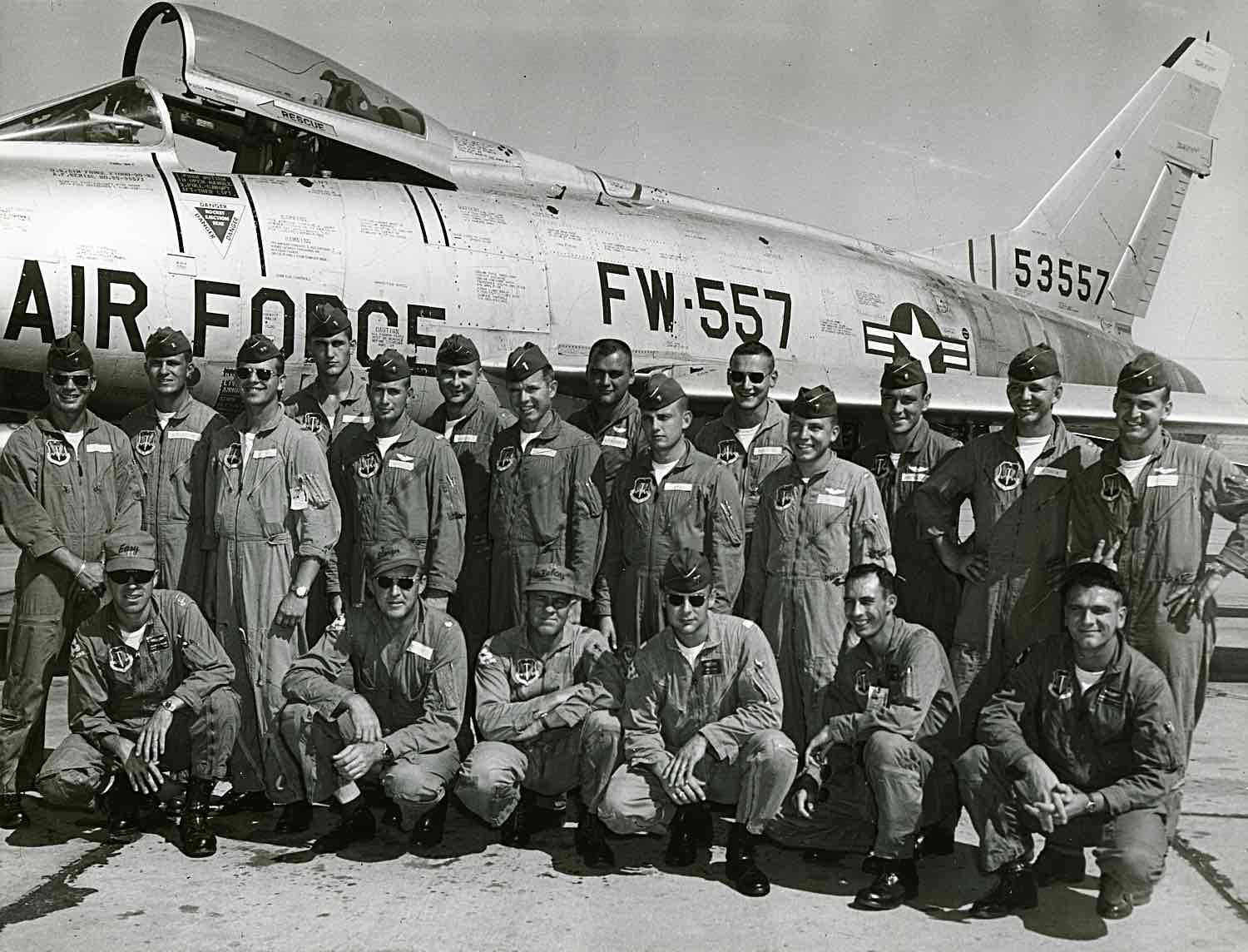
Front row, instructors, left to right: Bill Malloy, LtCol Robert Meppen (Squadron Commander), Capt. Robert J.L. Shofner (Flight Commander), Carl Funk, Paul Meiners, and Forrest Fenn.
Where Are They Now? Click on a name for what we know.
-
Roger Bisbee - Deceased
- Flew F-100s. Left AF in mid-1960s, joined Colorado ANG (F-100s), became air traffic controller. Died in car wreck in late 1960's.
-
Howard Lee Bodenhamer
- Flew F-105s, F-4s & F-16s. Retired AF Colonel, now a real estate consultant in Abilene, Texas.
E-mail: h.l.bodenhamer@gmail.com -
William L. (Bill) Bryant - Deceased
- Flew F-105s and was a Wild Weasel during the Vietnam War.
Bill died on February 10, 2016. -
Richard "Bugs" Bugeda - Deceased
- Flew F-105s. 30 years in the AF as a fighter pilot; 114 missions over North Vietnam. Then was in charge of food & beverage at a private golf course for six years in the 90's. In construction building restaurants. Flying airplanes, playing golf & snow skiing were hobbies. Died January 13, 2010. Obituary (pdf file of 119 KB).
-
David Carter
- Flew F-105s, left AF in 1967. Retired ANG Colonel. Lives in Temple, Texas.
E-mail: dcarter@datarecall.net -
Gene Eskew - Deceased
- Flew F-105s at McConnell AFB, Spangdahlem AB, Germany, and Takhli RTAFB, Thailand. Had a MIG-17 kill in April, 1967. Left the AF in 1967 after completing his SEA tour. Became businessman in Garland, Texas. Died of lung cancer January 7, 2005.
-
Wayne Harrell
- Joined United Airlines after class graduation. No further information.
-
Ed Haerter
- Flew F-105s at George AFB, CA and Spangdahlem AB, Germany. Then left the AF in 1967. Joined TWA & Iowa ANG (F-100s). Retired from the Guard in 1988 as a Brigadier General & from TWA in 1992. Lives in Harvard, IL.
E-mail: gofish_60033@yahoo.com -
John Marino - Deceased
- Died in an F-100 accident.
-
Howard "Gary" Nophsker - Deceased
- Flew F-100s; First class member in combat, 1965; also flew A-7D, taught at the Army Command & General Staff College; 8 years in Korea as aide to the Air Component Commander, as 314AD Det 1 Commander, and finally, as Director of Support Ops for 7AF. Retired LtCol. Died in Austin, Texas, at age 82. He was webmaster for the Misty FAC site.
-
Jack Phillips
- Flew F-105s at McConnell AFB, KS (twice), Spangdahlem AB, Germany, and Korat RTAFB, Thailand, and F-4s at George AFB and Korat. Retired AF November, 1977 as LtCol. Commercial real estate for a bit, but mostly a full-time treasure hunter until 1995. Lives in Arab, Alabama.
E-mail: jack@japhillips.com -
Mike Ryan
- Lost track of him completely.
-
Vincent Scott
- Left the Air Force in 1967. Lives in Prescott, Arizona.
E-mail: poppab1rd@gmail.com -
Ray Wagner - Deceased
- Flew F-100s and F-105s with New Jersey Air National Guard. Joined PanAm as a commercial pilot. Died December 21, 1988 as the First Officer on Pan AM Flight 103 (Lockerbie flight).
Awards and Decorations
Awards and decorations of the United States Armed Forces recognize service and personal accomplishments while a member of the U.S. military. Together with military badges, such awards are a means to display outwardly the highlights of a service member's career. The awards shown below are listed in order of precedence with a brief description of why they are awarded. The pictures are the ribbon that is worn on the uniform.

...awarded to any person who, while serving in any capacity, is cited for gallantry in action against an enemy of the United States while engaged in military operations involving conflict with an opposing foreign force.

...awarded to any officer or enlisted person who shall have distinguished her/himself in actual combat in support of operations by heroism or extraordinary achievement while participating in an aerial flight.

...awarded to any member of the Armed Forces of the United States who distinguishes themselves by either outstanding achievement or meritorious service.

...awarded for single acts of heroism or meritorious achievements while participating in aerial flight.

...awarded to members of the Armed Forces who, while serving in any capacity with the Air Force shall have distinguished themselves by meritorious achievement and service.

...awarded for sustained individual combat or mission readiness or preparedness for direct weapon-system employment.

...awarded only to enlisted personnel for "exemplary conduct" (exemplary behavior, efficiency, and fidelity), while on active military service.

...to recognize good behavior and faithful service in the Marine Corps.

...awarded for honorable active military service as a member of the Armed Forces of the United States between January 1, 1961 and August 14, 1974, (Vietnam War period).

...given as recognition for military service in the Republic of Korea and the surrounding waters after 28 July 1954 and ending on such a future date as determined by the Secretary of Defense.

...awarded to members of the United States Armed Forces who, after July 1, 1958, have participated in a United States military operation and encountered foreign armed opposition.

...awarded to all service members of the Armed Forces who between July 4, 1965 and March 28, 1973, served in the following areas of Southeast Asia: in Vietnam and the contiguous waters and airspace; in Thailand, Laos or Cambodia or the airspace thereof and in the direct support of military operations in Vietnam.

...conferred on units of the armed forces of the United States and of co-belligerent nations, for extraordinary heroism in action against an armed enemy on or after Dec. 7, 1941. The unit must display such gallantry, determination, and esprit de corps in accomplishing its mission as to set it apart from and above other units participating in the same campaign. The degree of heroism required is the same that which would warrant award of the Distinguished Service Cross to an individual.

...awarded by the Secretary of the Air Force to numbered units that have distinguished themselves by exceptionally meritorious service or outstanding achievement that clearly sets the unit above and apart from similar units.

...awarded to all service members of the U.S. Air Force who complete four years of honorable active or reserve military service with any branch of the United States Armed Forces.

...awarded to all U.S. Air Force service members who, after Jan. 1, 1963, qualify as "expert" in small-arms marksmanship with either the M-16 rifle or issue handgun.

...awarded to personnel who served outside the geographical limits of the Republic of Vietnam and contributed direct combat support to the Republic of Vietnam and Armed Forces for six months.

...weapons qualification badges are obtained after personnel obtain a passing score. Passing scores fall into one of three ranges – 190 to 209 for “marksman,” 210 to 219 for “sharpshooter,” and 220 to 250 for “expert” – and qualifying Marines receive a specific weapons qualification badge depending on the score obtained.
Military Ranks
The display pictured was presented to me by Tactical Air Command Headquarters co-workers at my retirement ceremony in November 1977. It shows each of the 13 different ranks held during my 20 plus years of enlisted and officer military service.
The Air Force command pilot wings and ribbons, shown in the center, were worn on the uniform.
Left Side Stripes
United States Marine Corps
4. Sergeant
3. Corporal
2. Private First Class
1. Private (no stripe, not shown)
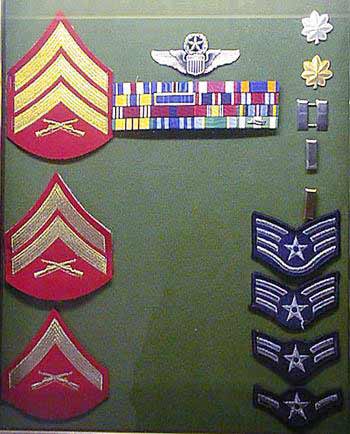
Right Side Insignia and Stripes
United States Air Force
13. Lieutenant Colonel
12. Major
11. Captain
10. First Lieutenant
9. Second Lieutenant
8. Staff Sergeant
7. Airman First Class
6. Airman Second Class
5. Airman Third Class (one stripe)
Organizations Joined
Red River Valley Fighter Pilot Association, or River Rats for short, is a fraternal organization formed in 1967 (charter member).

The Order of Daedalians, a military-fraternal organization of commissioned military pilots (member since 1972).

A few of the huge number of military links:
- USAF OCS Class 61-D, my class that graduated in June, 1961.
- Air Force Link has everything about the United States Air Force.
- Air Force Biographies has lots of info about current and past leaders.
- Air Force and Navy Lodging shows the available facilities.
- The U.S. Air Force Museum at Wright Patterson AFB, Dayton, Ohio, is a great place to visit.
- Air Force Retiree Services keeps us retired folks up to date.
- Redstone Arsenal's main web page with links to their newspaper.
- Redstone Arsenal Commissary information.
- Redstone Arsenal Morale and Welfare site has recreation information.
- Military.com has news from all the services.
- MilitaryHOMEFRONT is the official Department of Defense web site for reliable Quality of Life information designed to help troops and their families, leaders and service providers.
- U. S. Department of Defense is a comprehensive site.
- Defense Finance and Accounting Service (DFAS) has pay information.
- Army & Air Force Exchange Service (AAFES), lists all the PX stores.
- United States Department of Veterans Affairs, a government site.
